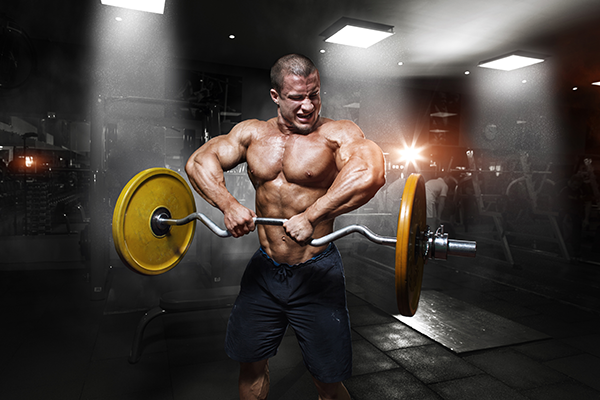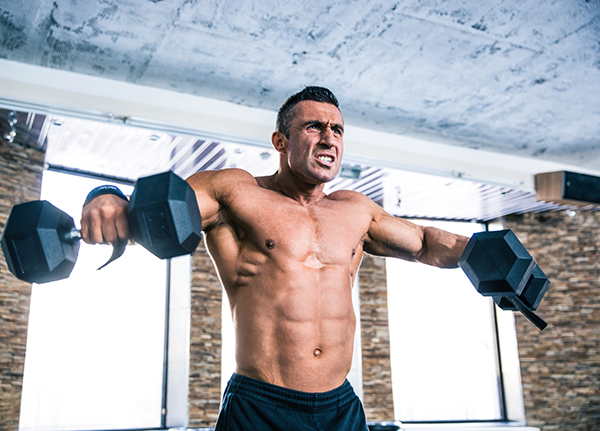
Lifting weights and engaging in cardiovascular training are among the best possible activities that one can do to improve and increase both the quality and quantity of life. Ask anyone who has spent a lifetime training and eating right about the impact it has had upon their well-being and potential enjoyment out of life, and they'll go on and on about the many benefits. This may seem unusual to some, as such a huge investment of time and training resources are required in order to see decent results. You're literally training 5 to 10 hours each week - and as a result, you look somewhat better than your peers. But it is a great deal of time you invest to reach these gains.
If you're going to be investing this much time and energy into your training, then you should at least be doing it right. First off, you are going to want to be training in a balanced manner. Many newbies to the gym will devote 100% of their time to chest and biceps in a well-intentioned effort to impress the fairer gender. Their asymmetrical physiques soon garner the wrong kind of attention and they learn of the importance of training the full body. At that time, muscle groups such as calves, forearms, lower back, and most importantly, shoulders, come into play. These early-overlooked muscle groups become key for both visual and functional performance over time.

Why are well developed shoulders important? There are two reasons why you should be training your shoulders for complete development. First off, appealing to your ego, you want to look good! Whether your goal is to grace a physique or bodybuilding stage in pursuit of a trophy and title, or just to be the most alpha Alpha on the beach this summer, completely developed shoulders (particularly the side delts) deliver a visual impact of width and power, visible from any angle and any pose. The wider the shoulders, the better the impact of the elusive and fabled V-shape. The waist will look smaller and every outfit you own will look better. But you need to choose the right exercises - and that involves careful and extensive use of side dumbbell lateral raises.
How important are lateral raises for the development of the deltoids? That's like asking how important are the French Fries to a value meal… they're huge! Lateral raises are THE top way to isolate the middle/side deltoids and pummel them into submission. You've gotta hit them hard enough to grow, but with enough grace and control to ensure you don't injure yourself. It's a tricky balance, and one potentially packed with mistakes for young trainers new to this movement. Let's look at a few mistakes that are common with side lateral raises to make sure you aren't making them!
Dropping the weight
The weight you're using for lateral raises doesn't have to be all that heavy to be effective. You aren't heaving the weight… you're letting a strand of muscle fibers which is smaller than your hand move a metal dumbbell in order to defy the forces of gravity. In other words, going heavy on this movement is a recipe for disaster. Nonetheless, you will want to keep the weight in a not-quite-all-the-way-down position when holding it in the lowered starting phase of the movement. Locking out all the way down removes the workload from the shoulders - and you will see much better results by keeping continuous tension upon the targeted side delts. They get six days to rest until the next training session… they sure don't need to take a break between every repetition! Continuous tension helps to stimulate the often-ignored slow twitch muscle fibers, leading to growth in new areas of the side deltoids.

Letting the elbow bend change
When raising the dumbbells during lateral raises, you will want to allow a slight bend of the elbow. This will give you the most control and power, while at the same time preventing unnecessary strain which could lead to injury. However, if you are letting the elbow bend change during the course of the movement, then you are defeating the purpose of this exercise, which is to force the side deltoid muscles to move the weight. Shifting the workload by unlocking that elbow is counter productive to your efforts, but all too common among trainers whose sole concern is blindly moving the most weight. Don't make this mistake!

Don't stop at the top
Many lifters believe it's a good idea to halt the movement of the lateral raise at the very top of the exercise. Pausing at this point (or worse, pushing the weight PAST perpendicular with your shoulder blades) can transfer the workload away from the shoulder muscles, and only the joints and tendons of the shoulder region. Let the weight raise then lower in a fluid motion, using only a moment to reverse the direction of the weight as you move from the positive to negative portion of the movement.
Getting sloppy
The shoulders are one muscle group of the body which is very frequently damaged or injured among lifters of every age, training style, and level of interest. Sometimes, these injuries are inevitable. Other times, they are completely avoidable. You're placing your joints and muscles in a very precarious position when you force the comparatively small muscles of the shoulders move some heavy weights, so it is highly important that you always maintain focus and concentration as you train the shoulders. Never train to heavy, never goof off or relax too much as you train. You're only giving 20 to 40 minutes a week to this entire muscle group, so you need constant focus and attention during that time in order to avoid injury. Good luck!


